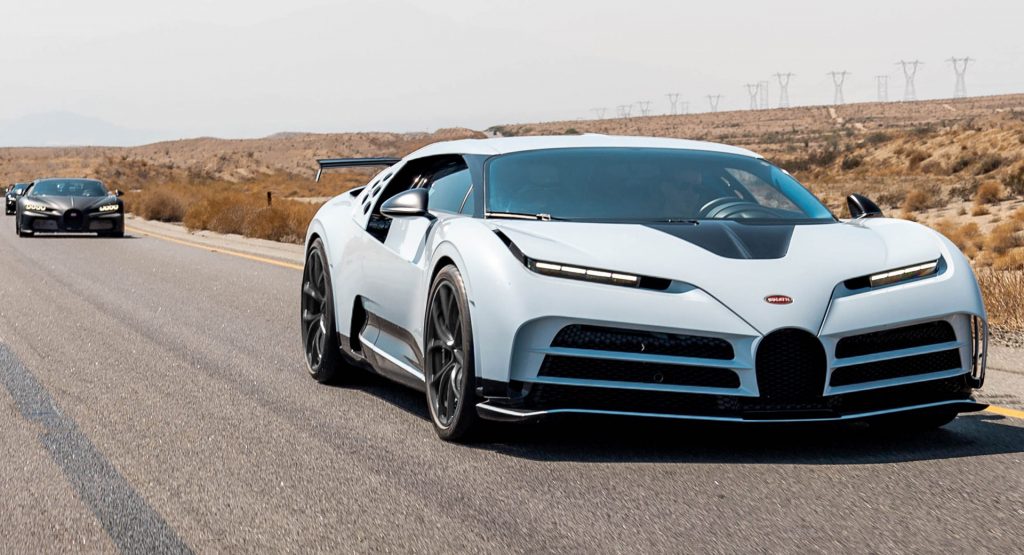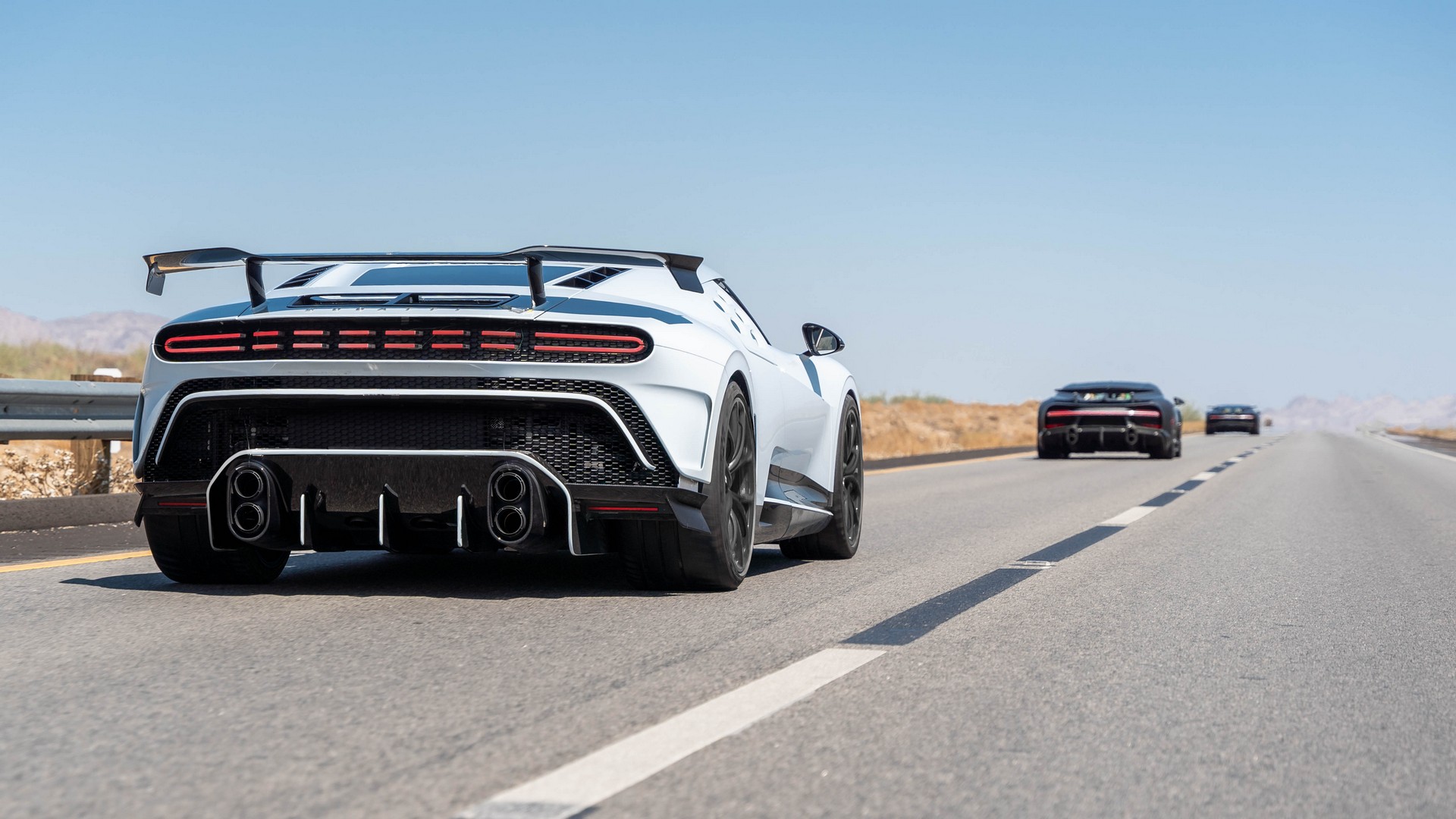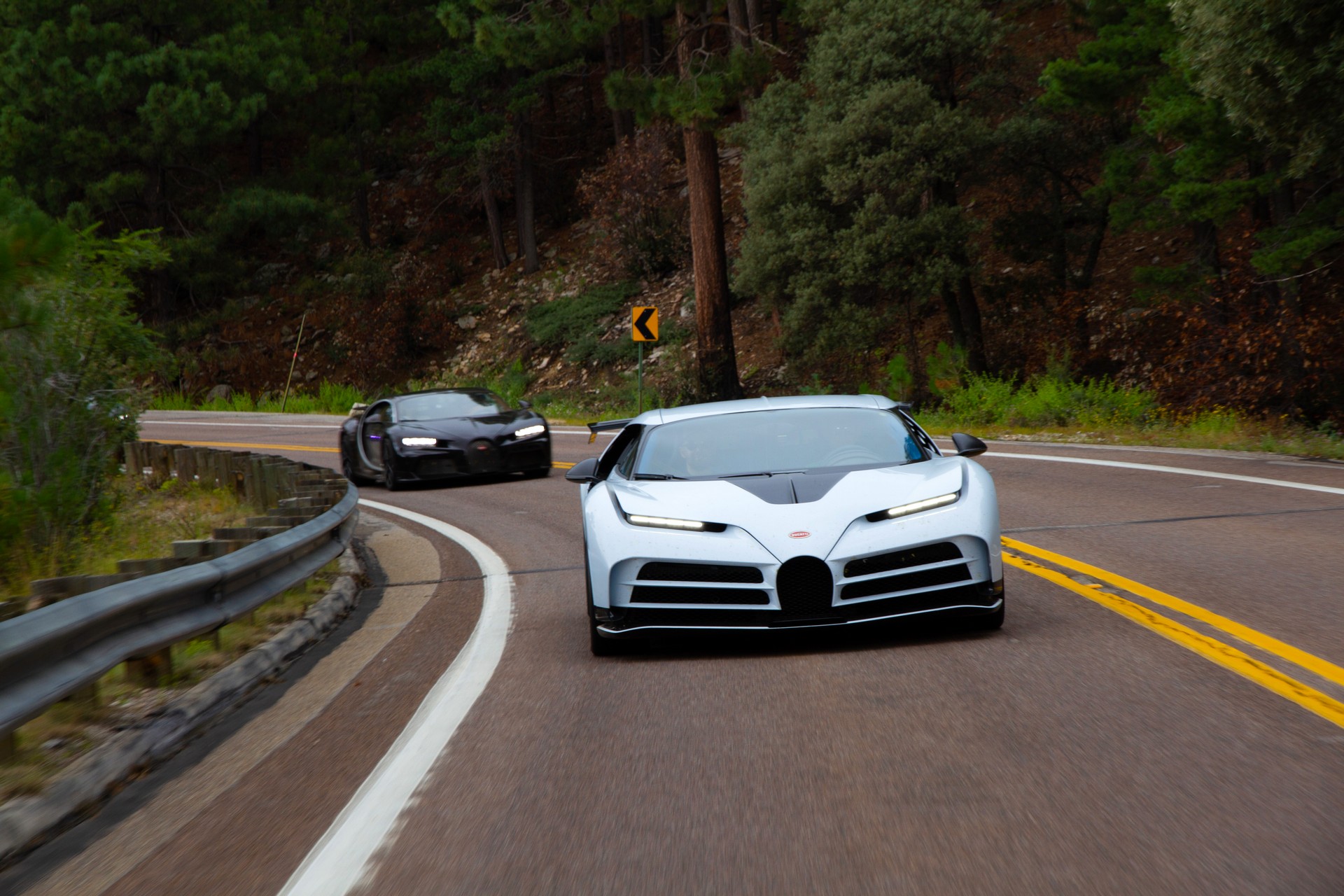Bugatti introduced the stunning Centodieci at Pebble Beach in 2019, but development work continues on the $9.3 (£6.8 / €8) million hypercar ahead of the first customer deliveries next year.
Following a round of testing at the Nürburgring this spring, the model traveled to America for hot weather testing during the height of summer.
A 27-member team spent three weeks in America, where they and the Centodieci were subjected to an “extremely hostile environment for both humans and machines.” Their journey began in California and traversed a 497 mile (800 kilometers) route to the deserts of Arizona.
Also Read: Bugatti’s Centodieci Is A 1,578 HP Tribute To The EB110
Along the way, the convoy – which also included three Chiron Pur Sports and four Chiron Super Sports – ascended Mount Lemon, tackled rough roads, and was forced to endure the tedium of stop-and-go traffic. Of course, it wasn’t all bad for the engineering team as they got to have a blast hitting speeds of 198 mph (320 km/h) on a closed road.
While that was undoubtedly fun, the purpose of the trip was testing and all of the models were outfitted with 200 sensors which collected data for the team to pore over. As Bugatti’s Head of Overall Vehicle Development explained, “During hot-climate testing, we focus specifically on the chassis, engine, transmission, thermal management, and electrics as well as on the vehicle as a whole.”
Technical Project Manager André Kullig added, “This hot weather endurance test is fundamental for us as it is the only way we can ensure that the Centodieci, like every Bugatti model, offers a flawless, reliable, and safe drive in extreme heat, too – even though our customers may never subject their cars to such extreme conditions. The new tests prove that our existing setup for the Centodieci works optimally for hours on end even in extreme heat.” Speaking of which, Bugatti noted the car was tested in temperatures that hovered around 113° F (45° C).
The tests were a success, so the 1,578 hp (1,176 kW / 1,600 PS) Centodieci continues its march to production. As part of that process, the car will be subjected to final high-speed drives to explore its 236 mph (380 km/h) electronically-limited top speed. The limited edition will also have to complete endurance tests over a distance of 18,641 miles (30,000 kilometers) before getting the final sign-off.

















